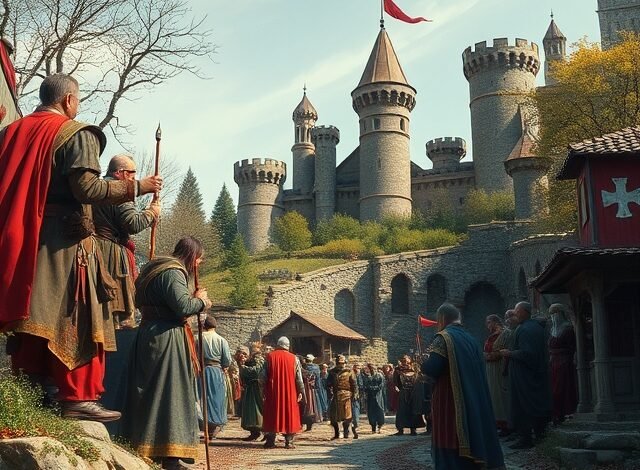Is Chivalry Dead’s Last Stand? Exploring the Evolution of Courtesy in Modern Society
Is Chivalry Dead's Last Stand? Exploring the Evolution of Courtesy in Modern Society

Introduction
“Is chivalry dead’s last stand upon us?” This question has been tossed around like a hot potato in discussions about modern manners and relationships. Some folks lament the loss of old-school gallantry, while others argue that our understanding of chivalry has simply evolved. So, what’s the real deal? Let’s dive into the history of chivalry, see how it’s morphed over time, and figure out where it stands today.
The Origins of Chivalry
The Medieval Knight’s Code
Back in the day, chivalry was the knight’s playbook—a code of conduct that combined military grit with moral integrity. Knights were expected to be brave, loyal, and courteous, especially towards women and the less fortunate. This code wasn’t just about opening doors; it was about upholding justice and protecting the vulnerable.
Chivalry and the Church
The Church had a big hand in shaping chivalry, pushing knights to defend the faith and act morally. This blend of religious duty and martial prowess aimed to curb the rowdy behavior of medieval warriors, steering them towards more noble pursuits.
Chivalry Through the Ages
Renaissance and Romanticism
As time marched on, the concept of chivalry shifted gears. During the Renaissance, it took on a more romantic flavor, emphasizing courtly love and the idealization of women. Literature from this era is chock-full of tales where knights perform daring deeds to win a lady’s favor.
The Victorian Gentleman
Fast forward to the Victorian era, and chivalry morphed into the idea of the “gentleman.” This wasn’t just about swordplay; it was about manners, etiquette, and a stiff upper lip. Men were expected to be courteous, honorable, and the epitome of restraint.
Is Chivalry Dead’s Demise Exaggerated?
Changing Gender Roles
In today’s world, gender roles are more fluid than ever. The traditional acts of chivalry—like a man paying for dinner or holding the door open—can sometimes feel out of place. Many women prefer equality over gestures that might seem patronizing. So, ischivalrydead’s relevance fading, or is it just adapting?
Modern Acts of Kindness
Maybe chivalry isn’t six feet under; perhaps it’s just wearing a new outfit. Modern chivalry could be about mutual respect, regardless of gender. It’s less about who holds the door and more about holding space for each other’s voices and choices.
The Double-Edged Sword of Chivalry
Benevolent Sexism
Here’s the kicker: some argue that traditional chivalry is a form of benevolent sexism. Acts like pulling out a chair or offering a jacket, while seemingly polite, can imply that women are weaker or in need of assistance. This perspective suggests that such gestures, though well-intentioned, might reinforce outdated stereotypes.
Genuine Courtesy vs. Obligation
On the flip side, genuine acts of kindness—like helping someone with heavy bags or offering your seat to an elderly person—are generally appreciated. The key difference lies in intention and perception. Are these actions performed out of a sense of obligation tied to gender, or are they expressions of universal human decency?
The Evolution of Social Etiquette
Digital Age Dynamics
In our tech-savvy society, the rules of etiquette are constantly changing. Online interactions lack the physical cues of face-to-face communication, making the expression of courtesy more challenging. Emojis and likes have become the new bows and curtsies, but do they carry the same weight?
Global Cultural Influences
Globalization has thrown a variety of cultural norms into the mix. What’s considered polite in one culture might be seen differently in another. This cultural melting pot requires a more nuanced understanding of respect and courtesy, moving beyond traditional chivalric gestures.
FAQs About Modern Chivalry
Q: Is chivalry dead’s concept outdated?
A: Not necessarily. While traditional chivalry may seem old-fashioned, the core values of respect and kindness are timeless. They’ve just evolved to fit modern societal norms.
Q: Can women be chivalrous?
A: Absolutely! Chivalry isn’t exclusive to any gender. Anyone can exhibit courtesy, bravery, and honor in their interactions.
Q: How can I practice modern chivalry?
A: Simple acts like listening actively, showing empathy, and treating everyone with respect are great ways to embody modern chivalry.
Q: Does chivalry conflict with feminism?
A: It depends on the context. When chivalry reinforces gender stereotypes, it can clash with feminist ideals. However, when it’s about mutual respect and equality, they can complement each other.
Q: Are there cultures where traditional chivalry is still prevalent?
A: Yes, some cultures continue to uphold traditional chivalric codes, while others have adapted or redefined them to align with contemporary values.
Conclusion
So, is chivalry dead’s final chapter written, or is it simply turning a new page? It seems that while the traditional image of a knight in shining armor may be a thing of the past, the essence of chivalry—respect, kindness, and honor—remains alive. It’s just found new ways to express itself in our ever-changing world. Let’s embrace these timeless values, not as relics of a bygone era, but as guiding principles that continue to shape our interactions today.
Previous read : Dancing into 2025: A Global Celebration of New Year’s Eve 2024



